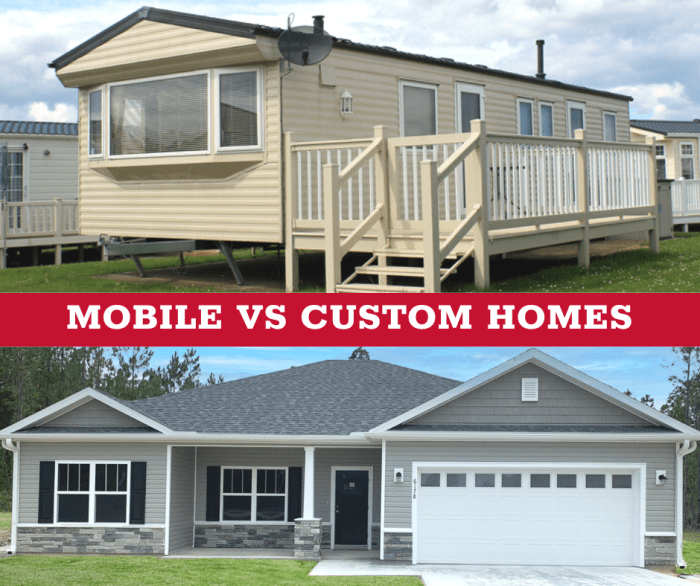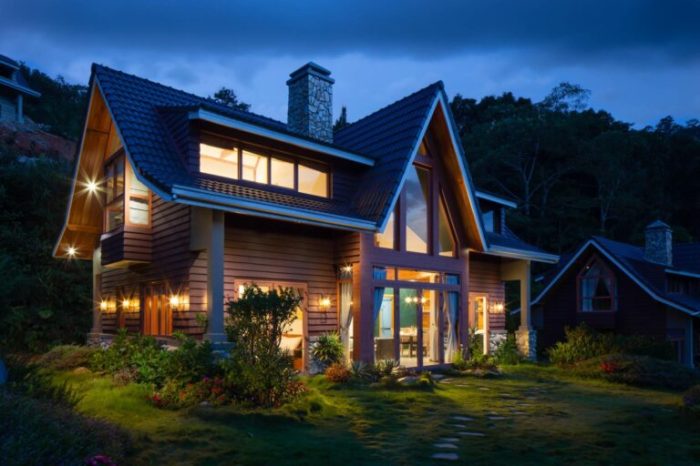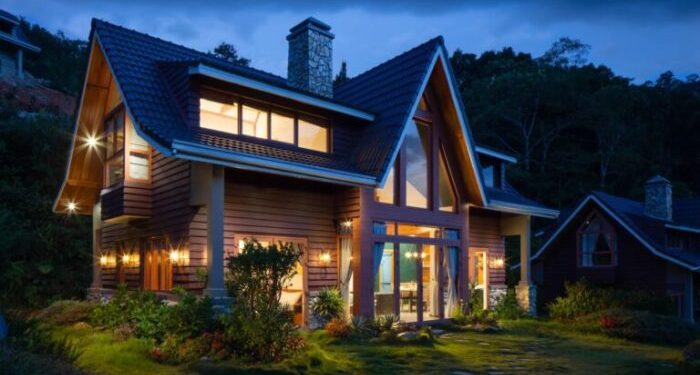Delving into the world of custom built homes vs modular homes, we uncover the differences and similarities between these two popular housing options. From design flexibility to cost considerations, this comparison aims to provide a detailed insight into which option might be the best fit for your housing needs.
Custom Built Homes

Custom-built homes are unique properties that are designed and constructed according to the specific preferences and requirements of the homeowner. Unlike pre-designed homes or modular homes, custom-built homes offer a fully personalized experience from start to finish.
Advantages of Opting for a Custom-Built Home
- Personalization: Homeowners have complete control over the design, layout, and features of their home, ensuring it perfectly suits their lifestyle and needs.
- Quality Craftsmanship: Custom-built homes are typically constructed with high-quality materials and attention to detail, resulting in a durable and long-lasting property.
- Energy Efficiency: Homeowners can incorporate energy-efficient features and technologies into their custom-built home, leading to potential cost savings on utility bills.
- Unique Design: Custom-built homes stand out from cookie-cutter properties, allowing homeowners to express their individual style and preferences in every aspect of the home.
Customization Options Available in Custom-Built Homes
- Architectural Style: Homeowners can choose the architectural style that best reflects their taste, whether it's modern, traditional, contemporary, or a mix of different styles.
- Interior Layout: From room configurations to ceiling heights and window placements, homeowners can customize the interior layout of their home to optimize space and functionality.
- Finishes and Materials: Custom-built homes offer a wide range of options for finishes, materials, and fixtures, allowing homeowners to create a cohesive and personalized aesthetic throughout the property.
- Smart Home Technology: Integrating smart home technology is a popular customization option in custom-built homes, providing convenience, security, and efficiency for homeowners.
Process of Designing a Custom-Built Home
- Initial Consultation: Homeowners work closely with architects and builders to discuss their vision, budget, and timeline for the project.
- Design Development: Architects create preliminary designs and floor plans based on the homeowner's preferences, incorporating feedback and revisions as needed.
- Permitting and Approvals: Once the design is finalized, the necessary permits and approvals are obtained from local authorities to begin construction.
- Construction Phase: Builders and contractors bring the design to life, following the approved plans and incorporating the chosen finishes and materials throughout the project.
- Final Inspections and Move-In: After construction is complete, final inspections are conducted to ensure the home meets all building codes and standards before the homeowner moves in.
Modular Homes
Modular homes are prefabricated houses that consist of multiple sections or modules constructed off-site in a factory setting. These modules are then transported to the site and assembled on a permanent foundation to create a complete home.
Benefits of Choosing a Modular Home
- 1. Cost-Effectiveness:Modular homes are often more cost-effective than custom-built homes due to the controlled factory environment, reduced construction time, and minimized waste.
- 2. Efficiency:The construction process of modular homes is faster and more efficient since weather delays are minimized, leading to quicker occupancy.
- 3. Quality Control:Modular homes undergo rigorous quality control inspections at the factory, ensuring high standards of construction and materials.
- 4. Energy Efficiency:Many modular homes are designed with energy-efficient features that can result in lower utility bills over time.
Design Flexibility and Limitations
While modular homes offer some design flexibility, there are limitations compared to custom-built homes. Modular homes are often limited in customization options, such as floor plan modifications or unique architectural features. However, advancements in modular construction technology have expanded design possibilities, allowing for more personalized touches and styles.
Construction Process
When it comes to custom-built homes, the construction process typically involves working closely with an architect and a team of contractors to create a unique home design that meets the client's specific needs and preferences. This process often includes multiple stages such as site preparation, foundation laying, framing, electrical and plumbing installation, interior finishing, and landscaping.
Construction Timelines
- Custom-built homes: The construction timeline for custom-built homes can vary significantly depending on the size and complexity of the project, as well as factors like weather conditions and availability of materials. On average, the construction of a custom-built home can take anywhere from 6 months to over a year.
- Modular homes: In comparison, modular homes are built off-site in a factory-controlled environment, which can help reduce construction time significantly. The assembly and installation of modular homes on-site typically takes a few weeks to a couple of months, depending on the size and design of the home.
Quality Control Measures
- Custom-built homes: Quality control in custom-built homes is often more hands-on, with contractors and inspectors closely monitoring each stage of the construction process to ensure that the highest standards are met. Clients also have the opportunity to provide feedback and make adjustments as needed.
- Modular homes: Modular homes undergo rigorous quality control measures in the factory setting, where each module is inspected and tested before being transported to the site for assembly. This controlled environment helps ensure consistency and precision in the construction process.
Installation and Assembly Process
- Modular homes: Once the modular home modules are transported to the site, they are assembled and installed on a prepared foundation. This process involves connecting the modules together, securing them in place, and completing any remaining finishing touches such as plumbing and electrical connections.
Cost Considerations
When it comes to building a new home, cost considerations play a significant role in decision-making. Whether you opt for a custom-built home or a modular home, understanding the cost factors involved is crucial.
Cost Factors in Custom-Built Homes
- Customization: Custom-built homes offer the flexibility to design your dream home according to your preferences. However, customization comes at a price, as unique features and design elements can increase the overall cost.
- Materials: The quality and type of materials used in custom-built homes can vary, impacting the total cost. High-end finishes and premium materials will drive up the expenses.
- Labor Costs: Skilled labor for custom-built homes often comes at a premium, especially if you are working with architects and designers to bring your vision to life.
Cost Savings in Modular Homes
- Efficiency: Modular homes are constructed in a factory-controlled environment, which can lead to cost savings due to streamlined production processes and reduced labor expenses.
- Material Costs: Bulk purchasing of materials for multiple modular homes can result in cost savings, as manufacturers can negotiate better prices with suppliers.
- Construction Time: The shorter construction timeline of modular homes can translate to savings on labor costs and financing expenses, as the project is completed faster.
Comparison of Overall Costs
While custom-built homes offer personalized design options and unique features, they typically come with a higher price tag compared to modular homes. Modular homes, on the other hand, provide cost savings through efficient construction methods and economies of scale. It's essential to weigh the benefits of customization against the potential savings when deciding between the two options.
Financing Options
- Mortgages: Both custom-built and modular homes can be financed through traditional mortgage loans, with lenders considering factors such as credit history, income, and the appraised value of the property.
- Construction Loans: For custom-built homes, construction loans are often used to cover the costs of building the home, with the loan transitioning to a traditional mortgage once the construction is complete.
- Manufactured Home Loans: Modular homes may qualify for manufactured home loans, which are specialized financing options designed for factory-built homes.
Closing Notes

In conclusion, weighing the benefits of custom built homes against modular homes can help you make an informed decision when it comes to your next housing investment. Whether you prioritize customization or efficiency, understanding the nuances of each type of home construction is key to finding your perfect abode.
Essential Questionnaire
What are the main differences between custom built homes and modular homes?
Custom built homes are constructed on-site and allow for unique design features, while modular homes are pre-fabricated in sections and assembled on-site with limited customization options.
Which is more cost-effective, custom built homes or modular homes?
Modular homes are generally more cost-effective due to their streamlined construction process and reduced labor costs compared to custom built homes.
Can I customize a modular home like a custom built home?
While modular homes offer some level of customization, they are more limited compared to the extensive customization options available in custom built homes.














